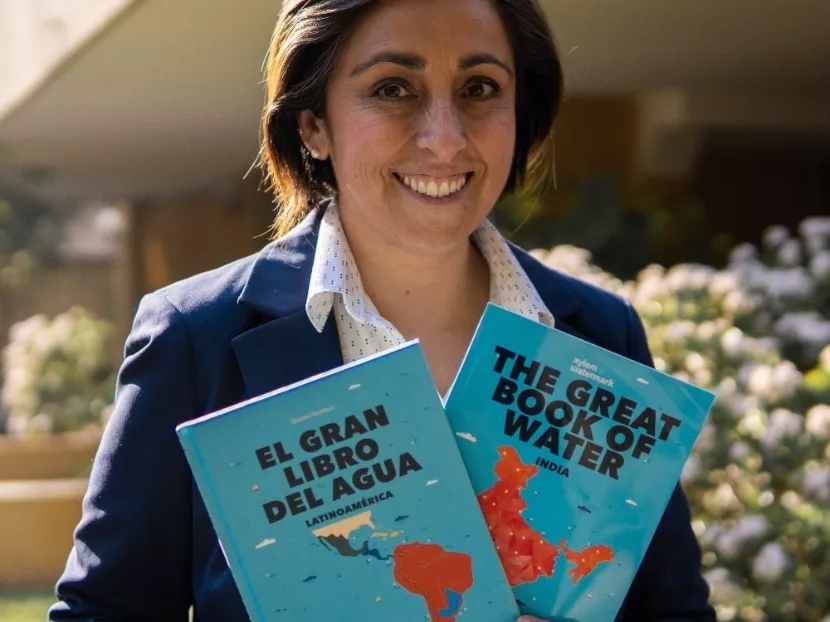The Great Book of Water helps children around the world learn about water and how it touches every part of our lives. The book was originally written in Spanish by Xylem’s Denise Pouleurs to fill what she saw as a gap in the market. Here’s her story.
“When I attended a water conference in 2019, I wanted to buy a book for my niece about water,” said Denise Pouleurs, vertical market manager for Water Utilities in Latin America. “There were a few children’s book in English and French, but none in Spanish. I thought, I have enough material in my head to write a book for children.”
And that’s exactly what she did. Originally from Chile, Pouleurs has a background in environmental engineering and is passionate about helping water utilities find sustainable solutions to water challenges.
“I did some research for the book, contacted a friend at a publishing house, then presented the idea to my boss,” she said. “My boss told me to go ahead, and then the pandemic came. While at home for a year, I researched and wrote the book, worked with a publishing house, and created graphics with an illustrator. At the end of the year, I showed it to my boss, and he thought it was unbelievable. He had forgotten I was working on it!”
Today, The Great Book of Water is available in three languages: Spanish, Portuguese and English. The book is used by schools, libraries and non-governmental organizations (NGOs) in Latin American and India to educate children aged 10 and older about water.
“An important message of the book is that water is used in everything,” Pouleurs said. “One of the things the book teaches children is about their water footprint, which is about more than the amount of water they use, but about how water is used to produce everything. For example, one apple takes 70 liters of water to produce, while one glass of apple juice takes 190 liters.”
The book includes five chapters covering the water cycle, ecosystems and watersheds, the amazing properties of the water molecule, the urban water cycle, and sustainability. Different versions of the book present local water issues in Latin America and India.
“I work with such great people at Xylem, and you really get the opportunity at this company to make things happen,” Pouleurs said. “Working with my colleagues, this book has turned out to be a beautiful tool. I think every person has a story or an idea in them that they can share and make a real difference.”
Click here for more information.




